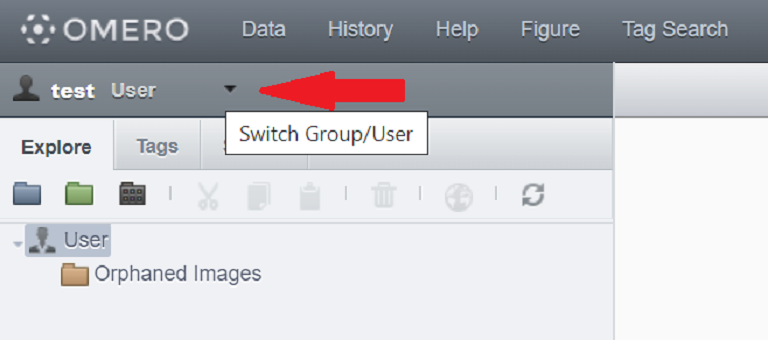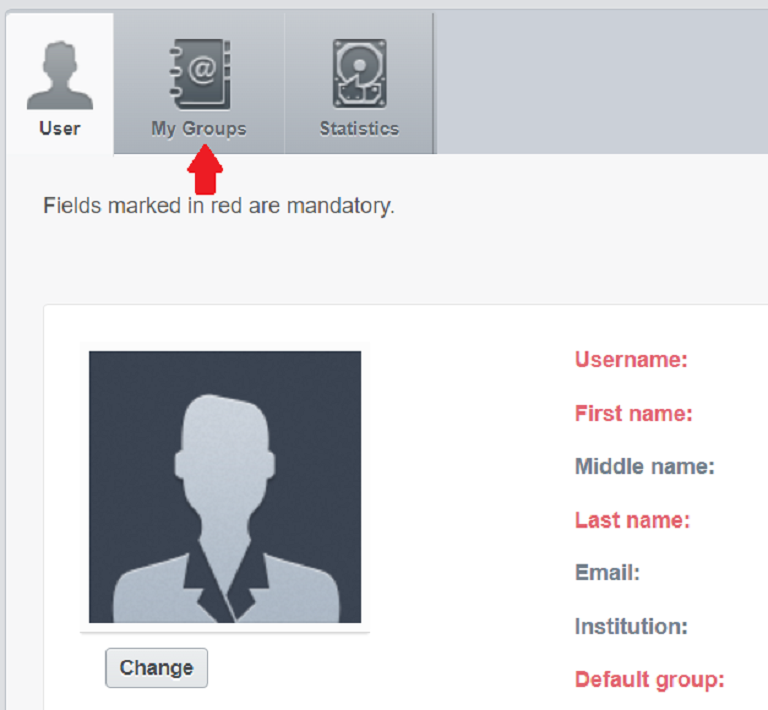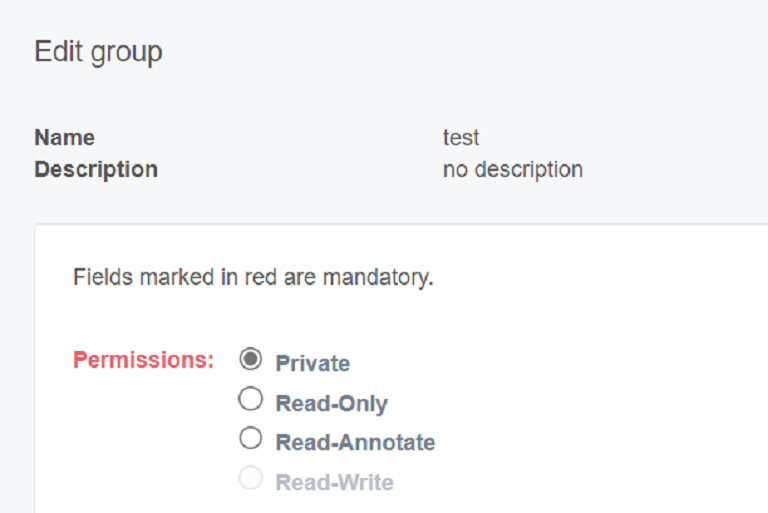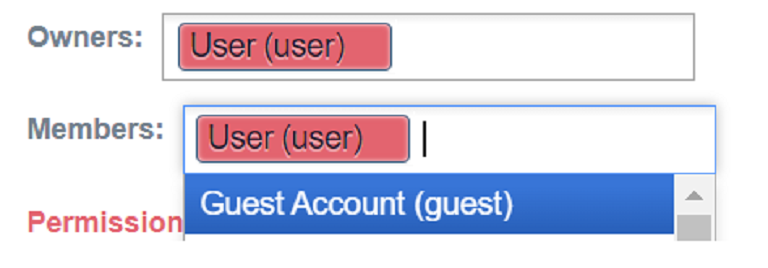Group Management
OMERO runs in a specific directory hierarchy.
- Groups
- Users
- Projects
- Datasets
- Images
- Datasets
- Projects
- Users
Every user has to be part of at least one group. A user can be a group owner, or a group member. Group owners and group members have different privileges depending on the group permissions. You can check from the OMERO web interface to find out about your groups, and the groups you own.
After logging in, You can see your account name in the top left area. Clicking the small triangle next to it will reveal the groups your account belongs to. In the image below the current group is named "test". Every account automatically is added to the group "default". It is possible to be a member in several groups.

In the User settings, you can select a "Default Group". This selects the group You will first see after logging into your OMERO account.

Group owners will see a tab called "My Groups" in their User settings.

This is the place to manage your groups.

If you click on edit, you will see the permission levels that a group can have. Only administrators can grant Read-Write privileges to a group.

The permissions as explained by OMERO Permissions page are as follows:
Private This group is the most restrictive:
-
A private Group owner can see and control who the group members are and can view their data.
-
As a Group member, you will only ever be able to see your own data.
This can be used for general data storage, access and analysis, but has very limited collaboration potential other than for the Group owner to see other group members’ data.
Read-only This group allows visibility of other users and their data, but minimal ability to annotate their data:
-
The Group owner can control group members as above and can perform annotations on the other group members data.
-
Group member can see who other members are and view their data, but cannot annotate another members’ data at all.
Read-annotate This group allows some collaboration on other members’ data for all members:
- Group member can view other members, their data and can make annotations on those other members’ data.
Read-write This group essentially allows all the group members to behave as if they co-own all the data:
- Group member can view, annotate, edit and delete all data; the only restriction is that they cannot move other members’ data into another group.
If you are a group owner, you can add members to the group by selecting them from the list of accounts that appear when clicking in the "Members" field.
